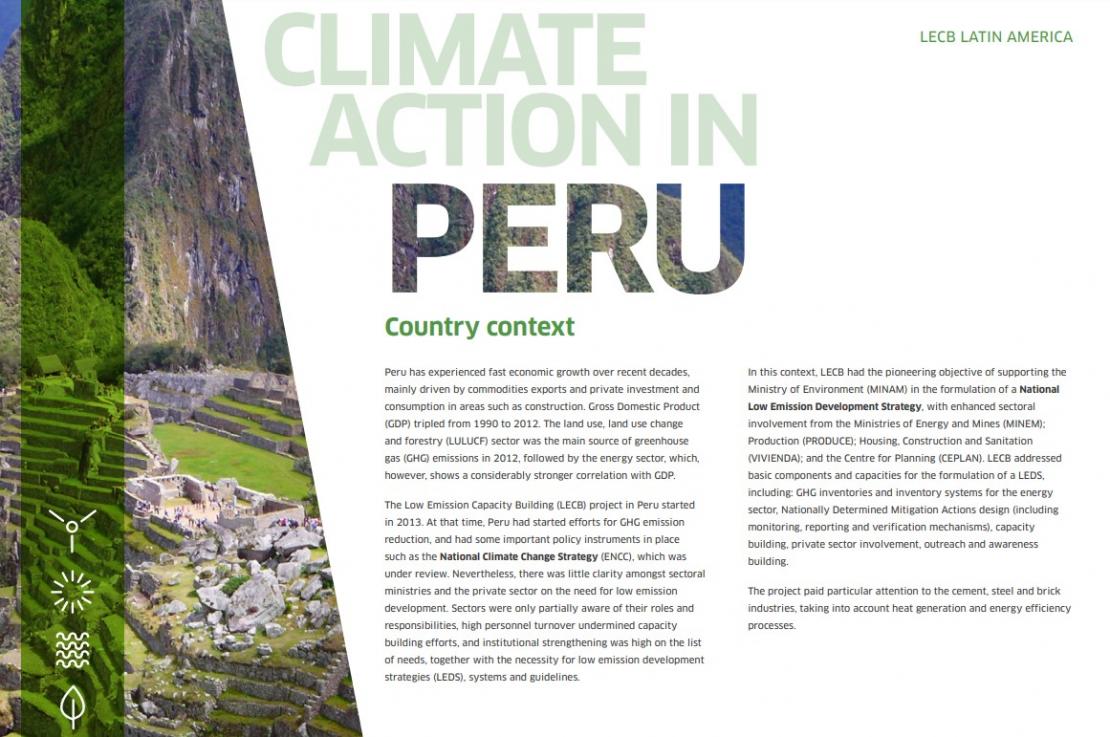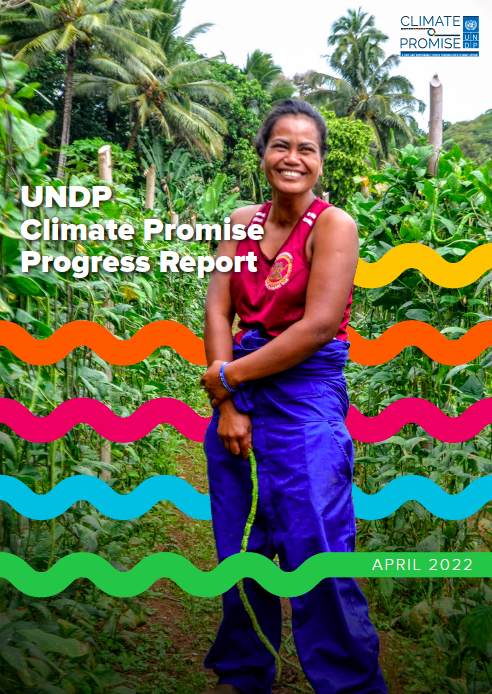LECB Programme Impact and Results: Peru

The Low Emission Capacity Building (LECB) project in Peru started in 2013. At that time, Peru had started efforts for GHG emission reduction, and had some important policy instruments in place such as the National Climate Change Strategy (ENCC), which was under review. Nevertheless, there was little clarity amongst sectoral ministries and the private sector on the need for low emission development. Sectors were only partially aware of their roles and responsibilities, high personnel turnover undermined capacity building efforts, and institutional strengthening was high on the list of needs, together with the necessity for low emission development strategies (LEDS), systems and guidelines.
In this context, LECB had the pioneering objective of supporting the Ministry of Environment (MINAM) in the formulation of a National Low Emission Development Strategy, with enhanced sectoral involvement from the Ministries of Energy and Mines (MINEM); Production (PRODUCE); Housing, Construction and Sanitation (VIVIENDA); and the Centre for Planning (CEPLAN). LECB addressed basic components and capacities for the formulation of a LEDS, including: GHG inventories and inventory systems for the energy sector, Nationally Determined Mitigation Actions design (including monitoring, reporting and verification mechanisms), capacity building, private sector involvement, outreach and awareness building.
The project paid particular attention to the cement, steel and brick industries, taking into account heat generation and energy efficiency processes.


